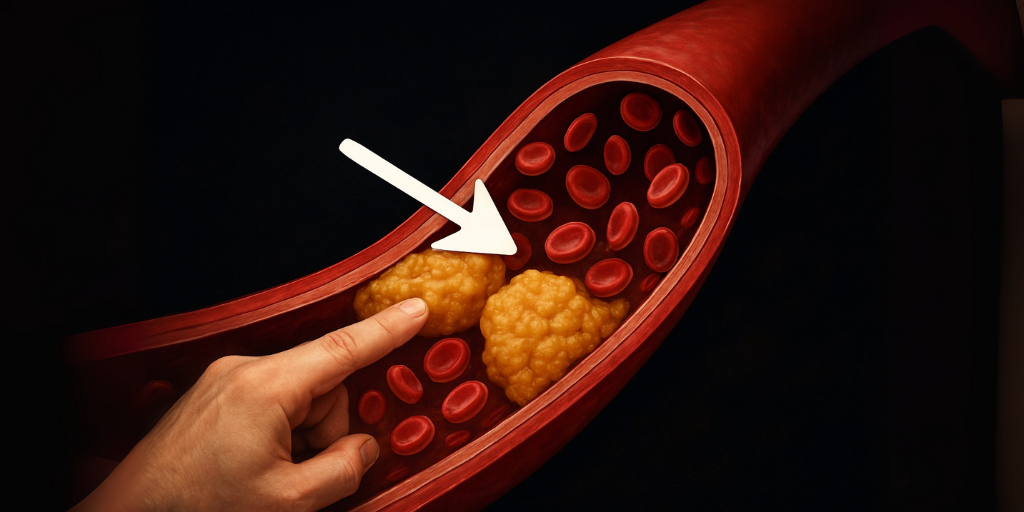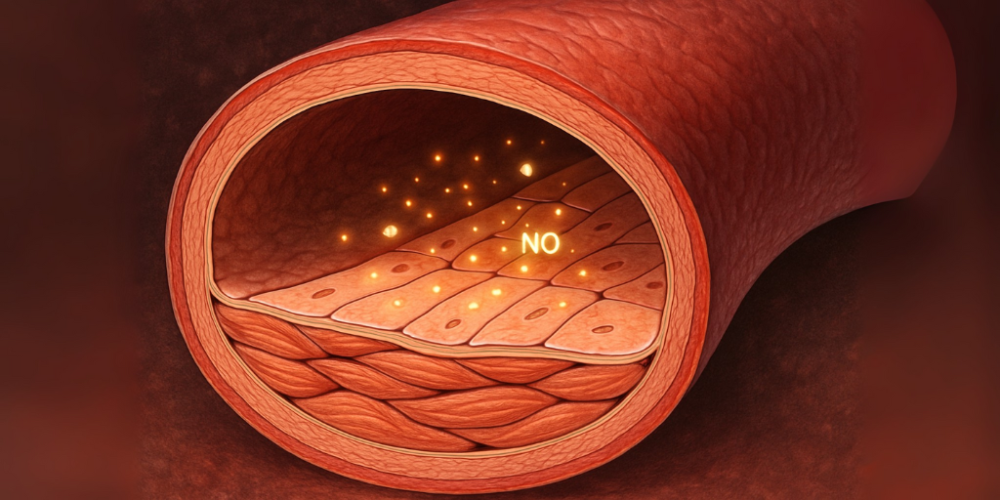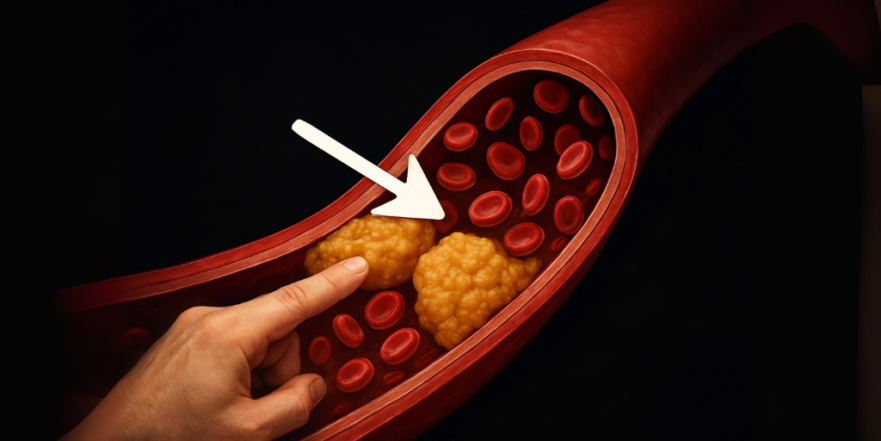
Have you ever wondered what the absolute best meal is to help clean out your arteries? We often hear about all the things we shouldn’t eat, but today, let’s flip the script and talk about what you should be eating to keep your heart happy and your arteries clear. It might surprise you, as it goes against a lot of common advice out there.
This article will explore the science behind arterial health, focusing on the crucial endothelial layer and the role of key nutrients like nitric oxide, magnesium, and Vitamin D. We’ll also clear up some common misunderstandings about “heart-healthy” foods and reveal the surprising components of the ultimate artery-cleansing meal. Get ready to learn how to naturally support your cardiovascular system with delicious and effective food choices.
💡Understanding Your Arteries: The Endothelial Layer

To figure out what to eat for healthy arteries, we need to look at the inside lining of these important blood vessels. This lining is called the endothelial layer, and it’s super important for your overall health. Think of it as the control center for your blood flow.
This layer does a lot of jobs:
- Controls blood pressure: It helps manage whether your blood pressure is high or low, keeping it in a healthy range.
- Acts as a filter: Especially in places like your kidneys, where blood vessels filter out waste, the endothelial layer plays a big part.
- Prevents clots: It helps make sure your blood flows smoothly without forming dangerous clots.
- Supports your immune system: It also has a role in keeping your body’s defenses strong.
One interesting thing about this layer is that it prefers glucose as its main fuel. Now, you don’t have to eat sugar to get this glucose; your body can easily make it. But here’s the catch: this layer also needs insulin to use that glucose. This means the inside of your arteries is very sensitive to problems with insulin. Many people have something called insulin resistance, which happens when you eat too many carbohydrates and snack all the time. If you have insulin resistance, your arteries might not be getting the fuel they need, even if there’s glucose around.
✨The Power of Nitric Oxide
Next up is something called nitric oxide. This stuff is amazing for your blood vessels. It helps them relax, which keeps your arteries from getting stiff. It’s like a natural relaxant for your blood vessels, helping to keep that endothelial layer healthy.
So, what helps trigger nitric oxide production?
- Vitamin D: This vitamin is incredibly powerful for supporting your endothelial layer. That’s why many people who are low in Vitamin D also have high blood pressure. Getting enough Vitamin D helps your body make more nitric oxide.
- Arginine: This is an amino acid that many people take as a supplement to help lower blood pressure because it boosts nitric oxide.
- Testosterone: Believe it or not, healthy testosterone levels also increase nitric oxide. Unfortunately, plastics in our environment can mess with testosterone levels, which is a real bummer.
- Magnesium: This mineral is another big player in increasing nitric oxide. Magnesium also helps relax muscles and can reduce stress hormones like cortisol, which can otherwise raise your blood pressure. Plus, magnesium is super important for keeping calcium from building up in your arteries in the first place. Along with Vitamin D and Vitamin K2, magnesium helps prevent that unwanted calcium buildup.

✅Key Takeaways
- The endothelial layer is vital for blood pressure control, filtering, clot prevention, and immune function.
- Insulin resistance, often caused by too many carbs and constant snacking, can harm this layer.
- Nitric oxide relaxes blood vessels and supports arterial health.
- Vitamin D, arginine, testosterone, and magnesium all help trigger nitric oxide production.
- Magnesium, Vitamin D, and Vitamin K2 are key for preventing calcium buildup in arteries.
❌Debunking “Heart-Healthy” Myths
It’s pretty common to see foods like certain cereals or seed oils marketed as “heart-healthy.” But let’s take a closer look at that. For example, some cereals can get a “heart-healthy” stamp if just over half of their ingredients are whole grains. This means they can still have refined grains and sugars, which, in my opinion, isn’t truly heart-healthy.
And then there are seed oils. These are often recommended, but like whole grains, they can actually cause your insulin levels to go up. We’re also often told to avoid saturated fats because of cholesterol, with the idea that they’ll clog our arteries. This is why red meat often gets a bad rap. But here’s a fun fact: one teaspoon of coconut oil has more cholesterol than seven ounces of steak, yet coconut oil isn’t usually demonized in the same way as red meat.
There’s a lot of confusing and, frankly, incorrect information out there about what’s good for your heart. The truth is, heart disease rates are still climbing, which tells us that what’s currently being recommended isn’t really working.
➡️The Best Meal to Clean Out Your Arteries
So, what is the best meal to support healthy arteries and a healthy heart? The most important thing is to eat foods that don’t mess with your insulin levels. This means going low-carb, and a ketogenic diet is often the best way to go. With ketones, your body can bypass insulin resistance and make sure that important endothelial layer gets all the fuel it needs.
Here’s what that ideal meal looks like:

- Grass-Fed Red Meat: This might be the exact opposite of what you’ve been told, but red meat should be the main part of this meal. If you’re having a burger, make sure it’s grass-fed. And here’s a tip: melt some raw cheese on top. Raw cheese is higher in Vitamin K2, which, as we talked about, helps prevent calcium buildup in your arteries. Red meat is also packed with zinc, which can directly boost your testosterone levels. Aim for about 6 to 8 ounces. Many people make the mistake of going for plant-based proteins that aren’t as easily used by your body. Your heart is a muscle, and it needs good raw materials to stay strong and heal.
- Arugula Salad with Pumpkin Seeds: For the second part of your meal, I highly recommend a salad, especially one with arugula. Arugula is fantastic because it can increase nitric oxide, and it’s also rich in Vitamins C and E, both great for your arteries. Toss in some pumpkin seeds too! They’re loaded with magnesium, zinc, and selenium, and they can also help boost nitric oxide. Just a handful of pumpkin seeds with your meal can make a big difference.
👉The Importance of Vitamin D3
Finally, let’s talk about Vitamin D3. When it comes to supporting a healthy heart, there’s nothing quite as powerful as Vitamin D3. It’s almost impossible to get enough Vitamin D from food alone, unless you’re eating a lot of seal fat like an Eskimo (which most of us aren’t!).
The best source of Vitamin D is sunlight. When you’re out in the sun, try to get plenty of exposure without getting burned. However, in the winter, when sunlight is scarce, you’ll likely need to take a supplement. As a maintenance dose, aim for at least 10,000 IUs every single day. This will do wonders for your heart and many other aspects of your health.
By focusing on foods that support your arterial health and understanding the true role of key nutrients, you can make informed choices that genuinely benefit your heart. It’s about nourishing your body with what it truly needs, not just following outdated or misleading advice.
Source: Dr. Eric Berg

